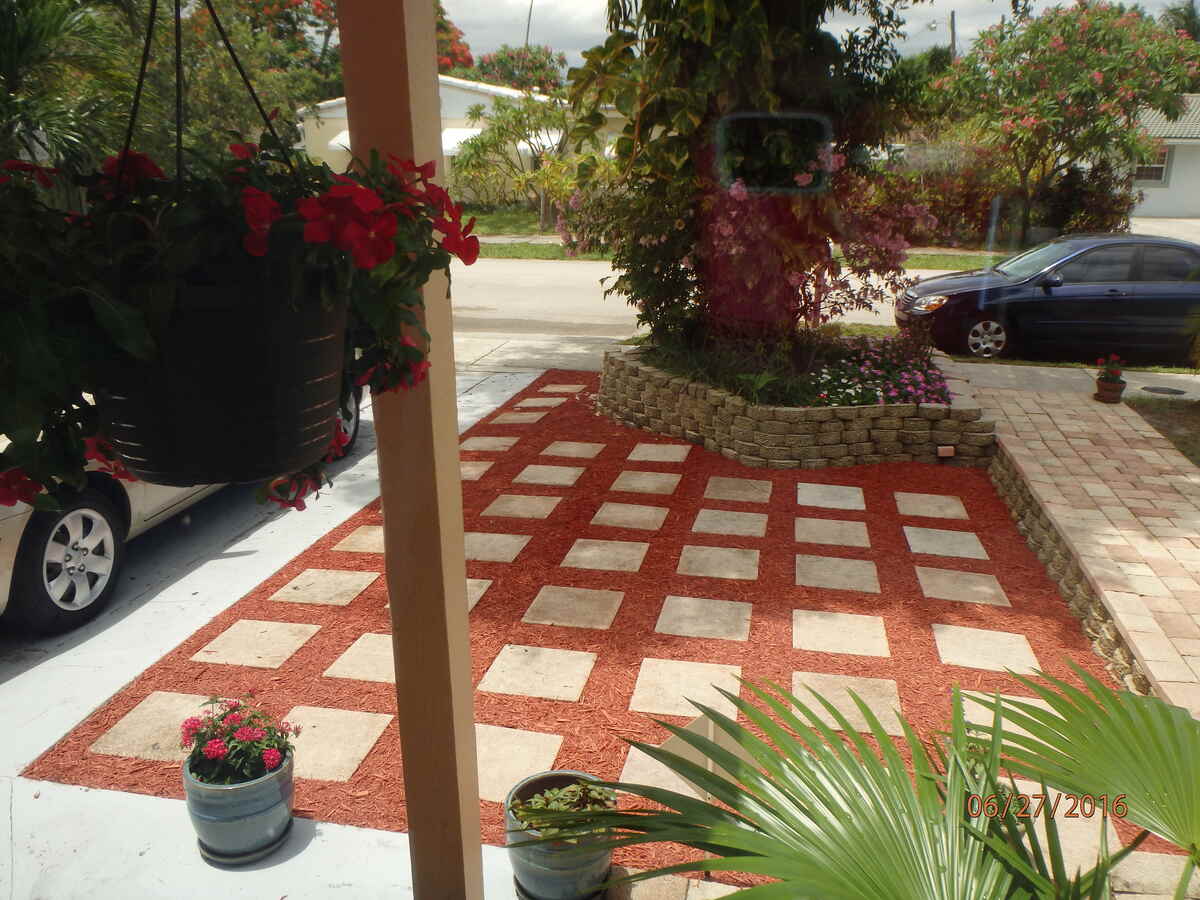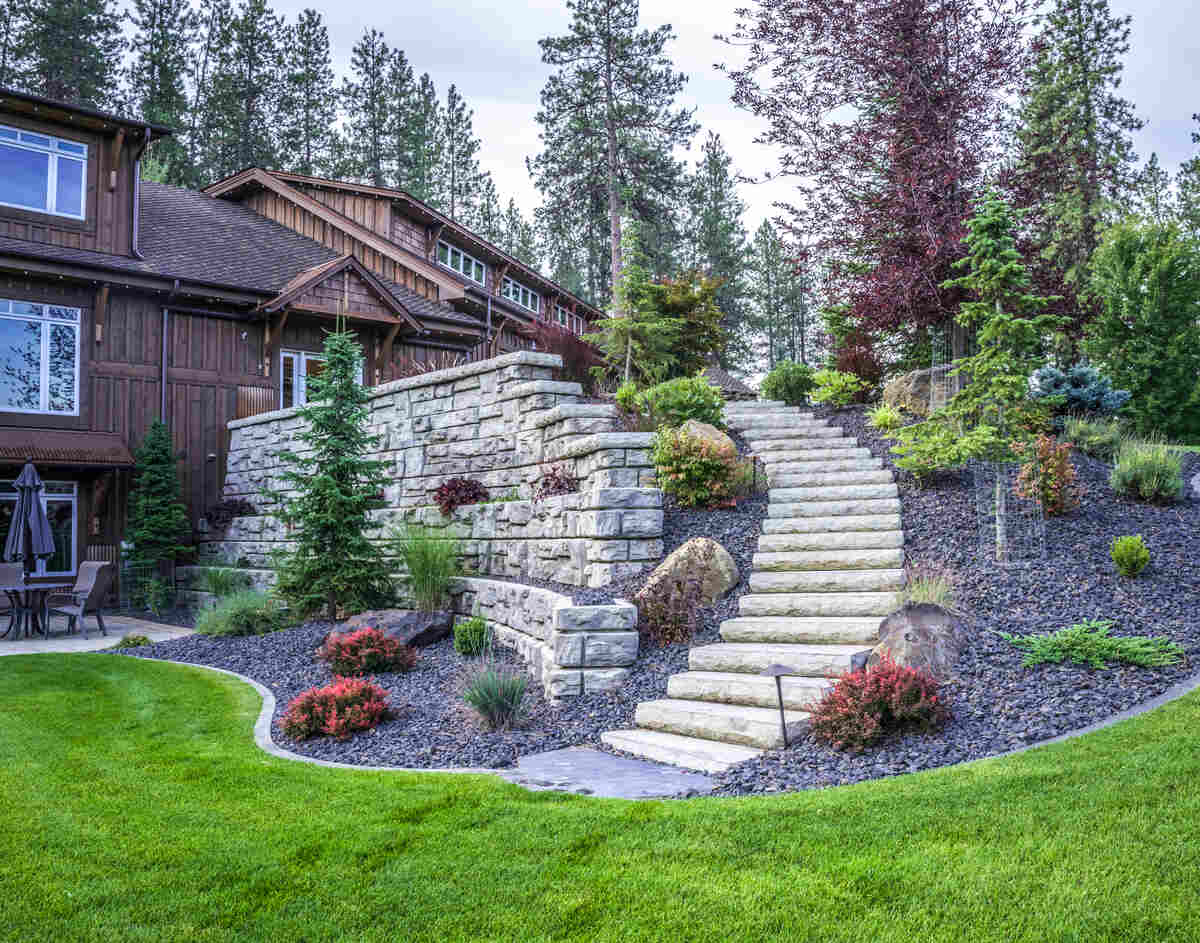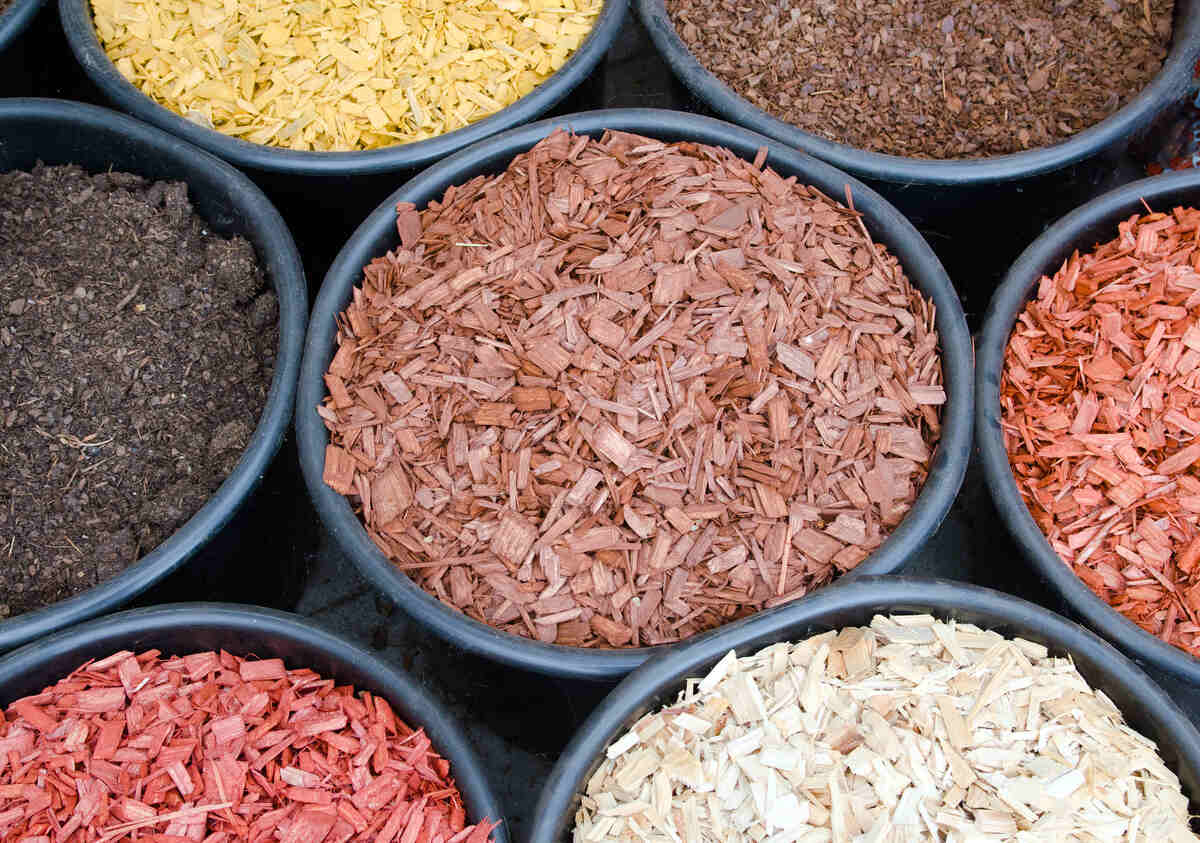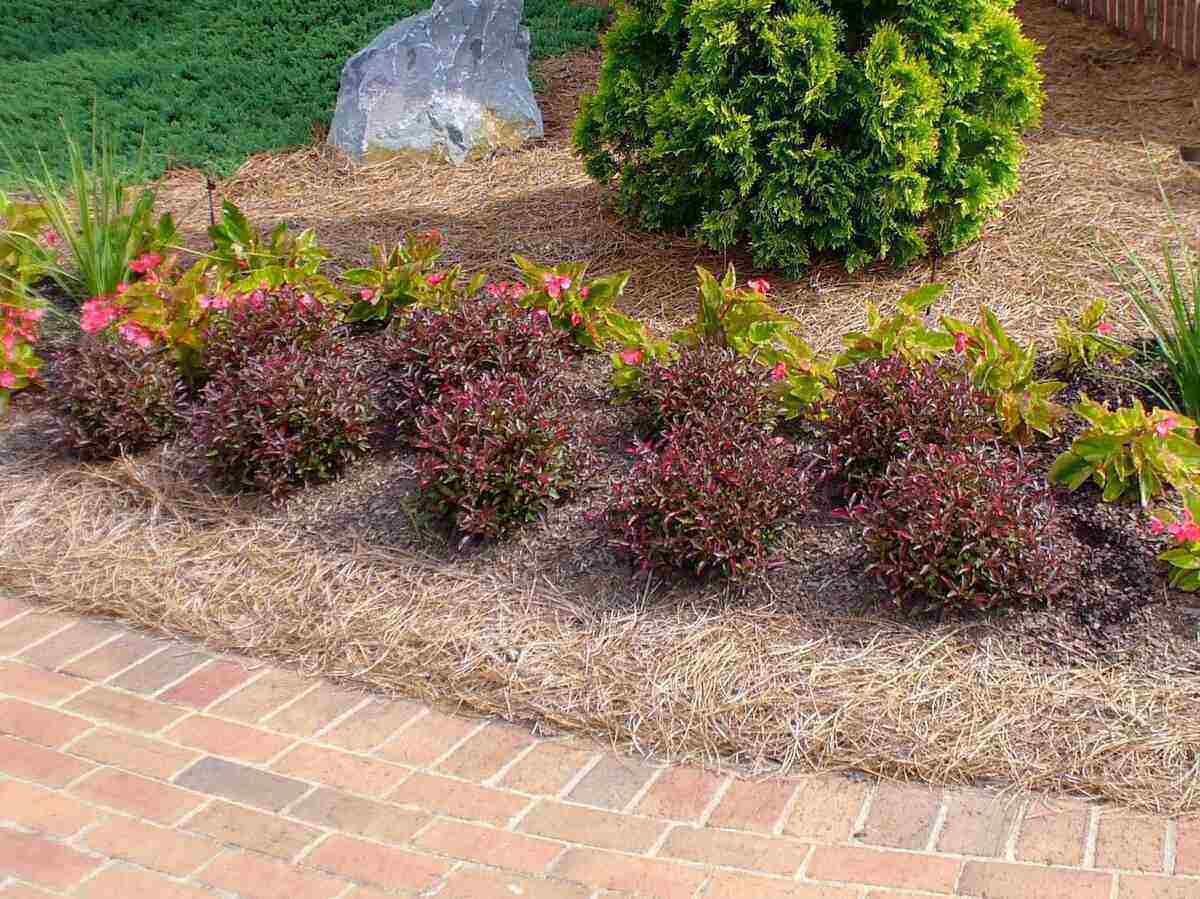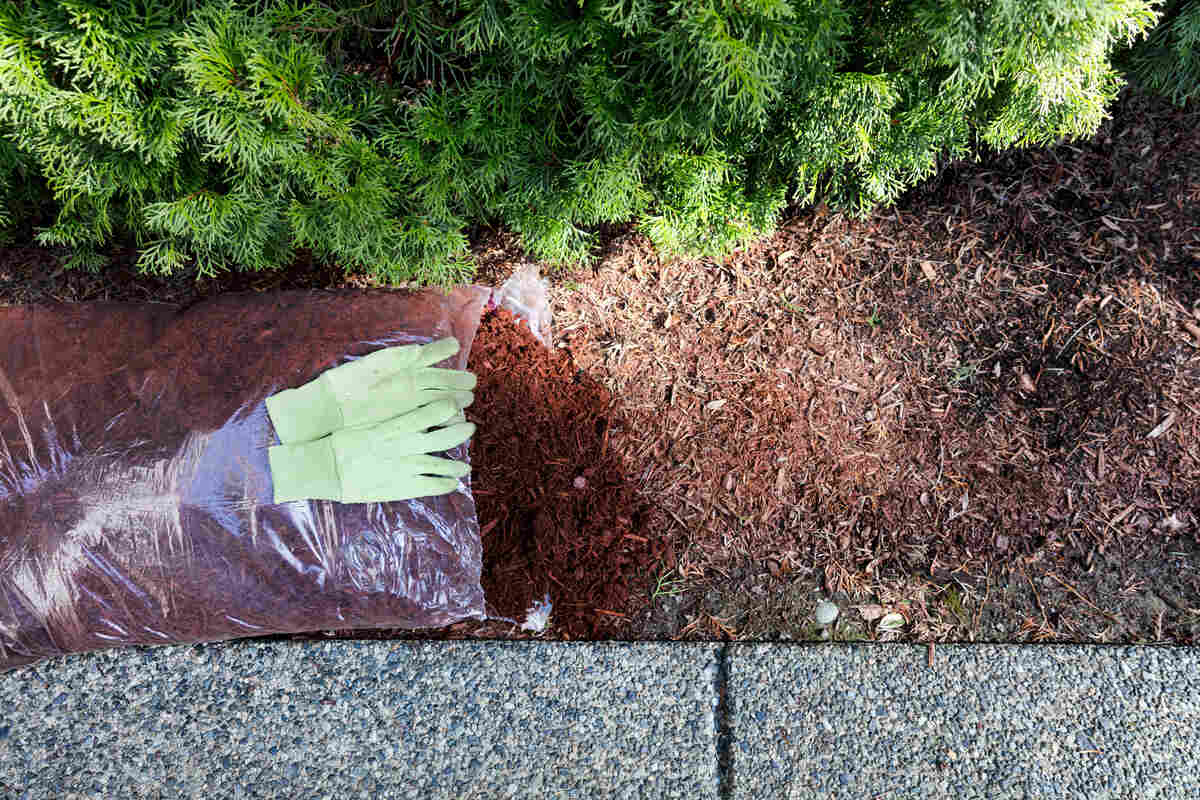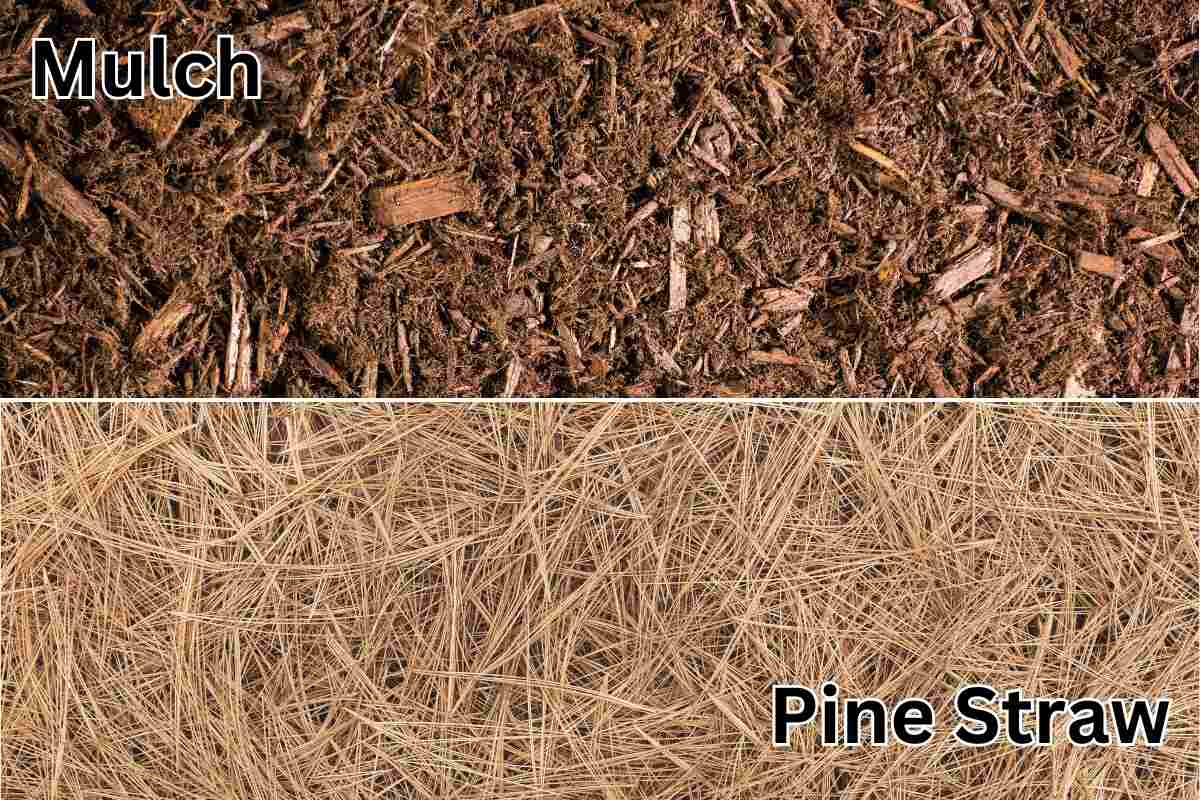
Mulch vs. pine straw: which should you use? The answer depends on your garden’s needs. Wood mulches are excellent for retaining soil moisture, cooling the soil, and keeping weeds away. Meanwhile, pine straw is your best bet for preventing erosion.
In this article, we’ll focus on wood chips and shredded bark, as they are the most commonly recognized mulch due to their widespread use. We will compare these with pine straw to determine which is most suitable for your landscape and garden beds. Let’s dive in!
Mulch vs. Pine Straw: What’s the Difference?
When you’re standing in your garden, trying to decide between wood chips or shredded bark mulch and pine straw, there are a few important things to think about. Let’s lay out the main differences to make it easier to compare:
| FEATURE | MULCH | PINE STRAW |
| Soil Health | Enriches soil by breaking down and adding nutrients | Great for erosion control, especially in sloped gardens |
| Durability and Maintenance | Requires less frequent replacement due to slower decomposition | Easy to spread, may need more frequent top-ups |
| Aesthetic | Offers a rich, earthy look with various colors and textures | Offers a natural, rustic look |
| Cost | Longer-lasting, potentially lower long-term cost | Generally affordable, but cost can add up with frequent replenishment |
| Environmental Impact | Sustainable if locally sourced and responsibly harvested | Sustainable if locally sourced; lightweight and easy to transport |
| Local Climate and Landscape | Better for flat areas needing moisture retention and nutrient enrichment | Works well in areas prone to heavy rain; ideal for sloped gardens |
Soil Health
Mulch and pine straw do different things to the soil. Mulch can make your soil richer as it breaks down. This means your plants get more nutrients over time. Meanwhile, pine straw’s structure helps to keep the soil in place, reducing the risk of it being washed away. This makes it a great pick for keeping your garden’s soil healthy and in place.
Durability and Maintenance
How often do you want to be out there, refreshing your ground cover? Wood mulch needs to be replaced less often than pine straw because it breaks down slower. Pine straw is pretty durable, but it can thin out or blow away, so you might find yourself adding more every year or so.
Aesthetic
What do you want your garden to look like? Mulch gives a rich, earthy look and comes in different colors and textures. Pine straw has a natural, rustic feel that can make your garden look like a peaceful, forest floor. The choice here really depends on your personal style and what you think will complement your garden best.
Cost
Thinking about your garden budget? Using grass clippings as organic mulch is pretty much free if you have a lawn. Wood chips or shredded bark mulch and pine straw might have an upfront cost, but consider how often you need to replace them. Pine straw might seem cheaper at first, but if you’re replacing it more frequently, the costs can add up.
Pine straw ranges in price from $20 to $55 per cubic yard. Depending on the type of wood chips or bark, mulch costs between $30 to $110 per cubic yard. For more details, check out our mulch pricing guide. If you’re on a tight budget, you might be able to find free mulch.
Environmental Impact
If eco-friendly lawn care is your priority, consider how mulch and pine straw are sourced. Both shredded bark or wood chip mulch and pine straw can be sustainable, especially if locally sourced and responsibly harvested. Choose based on the smallest environmental footprint to support eco-friendly gardening.
Local Climate and Landscape
For gardens in areas with heavy rain, pine straw is excellent for erosion control, especially on slopes where soil can easily wash away. In contrast, mulch can be more beneficial in flat gardens or areas where soil enrichment is a priority. Additionally, certain organic mulches, like grass clippings, decompose more much faster in hot, humid climates.
FAQ About Mulch and Pine Straw
Does using pine straw for mulch acidify your soil?
This is actually a myth. While pine needles are slightly acidic, once they fall and start to decompose as mulch, they don’t significantly change the soil’s pH levels. So you can use pine straw around all types of plants without worrying about altering your soil’s pH levels.
Do grass clippings break down faster than pine straw?
Yes, they do. Grass clippings decompose faster than pine straw, which means they feed your soil with nutrients more quickly. Pine straw takes longer to break down, so it covers the ground longer but doesn’t feed the soil as fast.
Is one better than the other for stopping weeds?
Both mulch and pine straw are pretty good at keeping weeds at bay. They cover the soil, making it harder for weed seeds to sprout. Just make sure to lay them thick enough to block the sunlight weeds need to grow.
Do mulch and pine straw attract bugs?
Organic mulches like shredded bark and wood chips can attract insects as they decompose, but this is usually part of a healthy garden ecosystem. Pine straw might attract certain bugs too, but generally, neither should cause significant problems with pests. If you’re worried, keep an eye on your garden and adjust as needed.
Seek Expertise in Landscaping
Not sure whether mulch or pine straw is the best pick for your garden? A landscaping professional can guide you.
Getting expert help can make all the difference in your garden’s health and appearance. Contact a landscaping pro today to get started. They’ll handle the heavy lifting, so you can enjoy a beautiful, thriving landscape without the guesswork.
Main Photo Credit: Mulch: Nathanael Asaro / Adobe Stock Free / License. Pine Straw: claraveritas / Adobe Stock Free / License.
